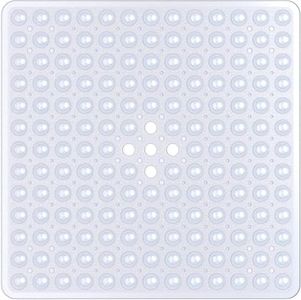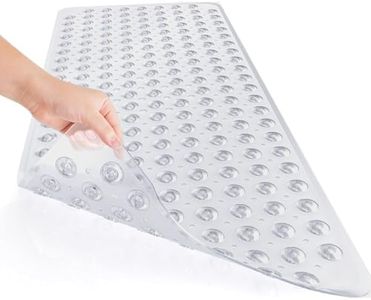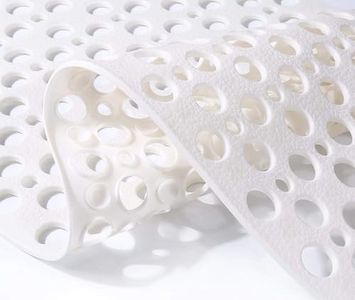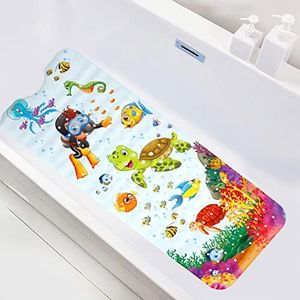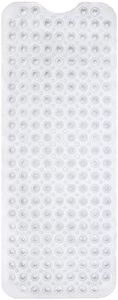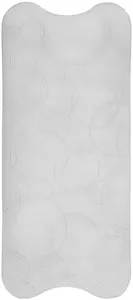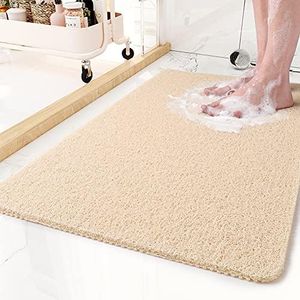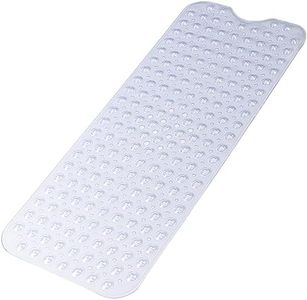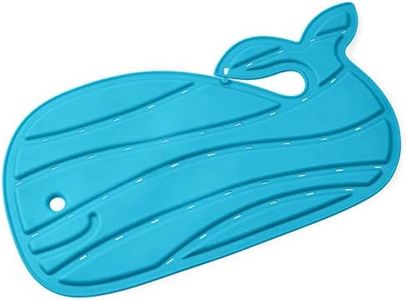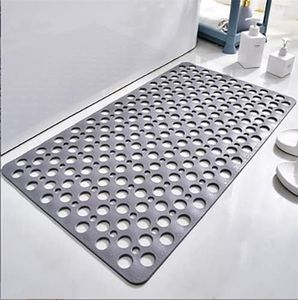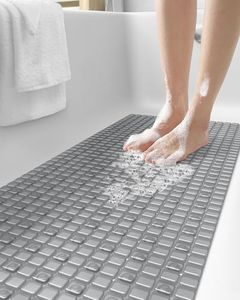We Use CookiesWe use cookies to enhance the security, performance,
functionality and for analytical and promotional activities. By continuing to browse this site you
are agreeing to our privacy policy
10 Best Non Slip Tub Mats
From leading brands and best sellers available on the web.By clicking on a link to a third party's website, log data is shared with that third party.
Buying Guide for the Best Non Slip Tub Mats
Choosing the right non-slip tub mat is important for ensuring safety and comfort while using your bathtub or shower. A good tub mat can help prevent slips and falls, especially in wet conditions. The best way to select the right mat is to consider the conditions in which it will be used, the users’ needs (like children, elderly, or people with limited mobility), and the ease of cleaning and maintenance. Prioritize features that enhance grip, comfort, and durability, and make sure the mat is compatible with your tub or shower surface.MaterialThe material of the tub mat affects not only its comfort underfoot and durability, but also how well it grips the tub or shower surface. Common materials include rubber, vinyl, and PVC, each offering slightly different textures and levels of flexibility. Rubber mats are often softer and have strong anti-slip properties, making them a good choice for people who want both comfort and safety. Vinyl and PVC mats are usually easier to clean and resist mold, making them practical for busy households. When choosing, think about who will be using the mat, how comfortable it should feel, and how often you want to clean it.
Grip or Suction CupsMost non-slip tub mats come with suction cups or textured surfaces on the underside to help them stick to the bath or shower floor and prevent sliding. The number, size, and arrangement of suction cups can impact grip strength. Mats with more or larger suction cups provide a more stable, secure hold, which is ideal for families with kids or older adults who require extra safety. For lighter use, a mat with fewer, smaller suction cups may be enough. Check that the mat will adhere well to your specific type of tub or shower surface, as textured or uneven surfaces may require a different mat style.
Size and ShapeTub mats come in various sizes and shapes to accommodate different bathtubs and shower stalls. Choosing the right size ensures the mat covers enough surface area to provide reliable non-slip protection, but is not so large that it becomes cumbersome or hard to clean. Measure your tub or shower ahead of time and select a mat that fits well without overlapping the edges, which can cause the mat to lift or curl. Rectangular mats work well for standard tubs, but you can also find square and oval shapes for specialized spaces.
Drainage HolesDrainage holes in a tub mat allow water to flow through easily, helping reduce puddling and the risk of mold or mildew buildup. Mats with more or larger drainage holes tend to dry faster and stay cleaner with less effort. If your mat will be used by multiple people or stays wet for long periods, prioritize good drainage. For occasional or single-person use, drainage is still helpful but may not need to be your top concern.
Cleaning and MaintenanceEase of cleaning is important because wet environments can encourage bacteria, mold, or mildew growth. Some mats are machine washable, while others can be rinsed and hung to dry. Choose a mat that matches your willingness to clean it—if you prefer low maintenance, look for antibacterial materials or mats that can be tossed in the washing machine. If you don't mind more hands-on cleaning, hand-washable mats expand your options.
Texture and ComfortThe top surface texture affects both the comfort underfoot and how well the mat prevents slipping. Some mats have raised or bubble-like patterns for extra grip, while others have a softer, more cushioned feel for sensitive feet. For households with children, elderly people, or anyone needing extra traction, a textured, grippy surface is best. If comfort is your priority, look for a mat with a softer, cushioned design that still provides reliable non-slip features.
